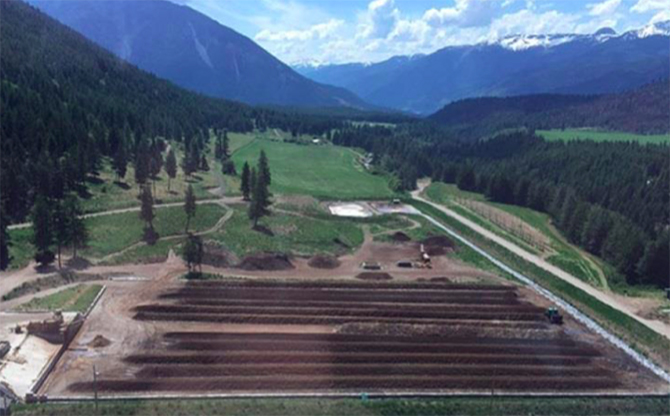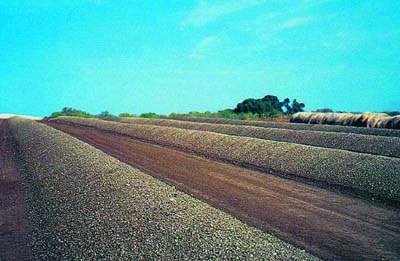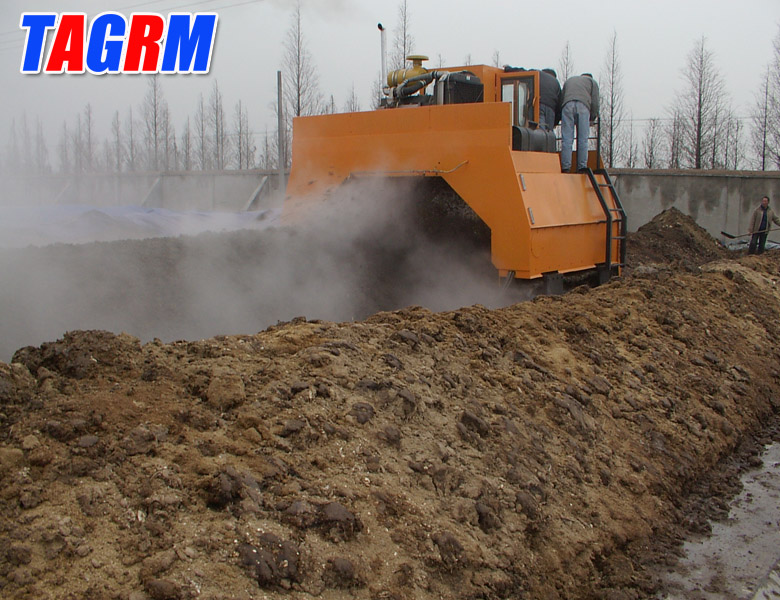Open-air windrow piles compost production does not require the construction of workshops and installation equipment, and the hardware cost is relatively low. It is the production method adopted by most compost production plants at present.
1. Pretreatment:

The pretreatment site is very important. First, it must be firm (the surface material of the site must be rammed and leveled with cement or tri-compound soil), and the second is that the stockpiling site must have a slope toward the determined water outlet direction. The incoming raw materials are firstly stacked on a flat site and then subjected to pretreatment such as crushing and screening by a crusher for use.
2. Building windrow piles:
The pretreated raw materials are built into long strips of compost piles with a loader. The width and height of the piles should be determined according to the supporting turning equipment, and the length should be determined according to the specific area of the site. The longer the length of the pile, the better. , which can reduce the number of turns of the turning machine and prolong the effective operation time of the turning machine.
3. Turning over:
Turnover is to use a turner to turn, crush and re-stack the compost material. Turning the compost can not only ensure the oxygen supply of the materials to promote the uniform degradation of organic matter but also make all the materials stay in the high-temperature area inside the compost for a certain period of time to meet the needs of material sterilization and harmlessness.
The number of turnings depends on the oxygen consumption of microorganisms in the strip pile, and the frequency of turning is significantly higher in the early stage of composting than in the later stage of composting. The frequency of pile turning is also limited by other factors, such as degree of decay, type of turning equipment, generation of bad odors, space requirements, and changes in various economic factors. Generally, the heap should be turned once every 3 days, and should be turned when the temperature exceeds 50 degrees; when the temperature exceeds 70 degrees, it should be turned once every 2 days; when the temperature exceeds 75 degrees, it should be turned once a day to facilitate rapid cooling. Under normal circumstances, the compost can be decomposed in 15 to 21 days.
Most of the stack-type compost turning equipment adopts a collapsed hydraulic turning machine, which increases the amount of oxygen added by turning the material on the spot, and promotes the evaporation of water and the loosening of the material.
4. Storage:
The fermented materials should be stored in a dry, room-temperature warehouse for use in the next process.
If you have any other questions or needs, please contact us by the following ways:
whatsapp: +86 13822531567
Email: sale@tagrm.com
Post time: Jul-05-2022


